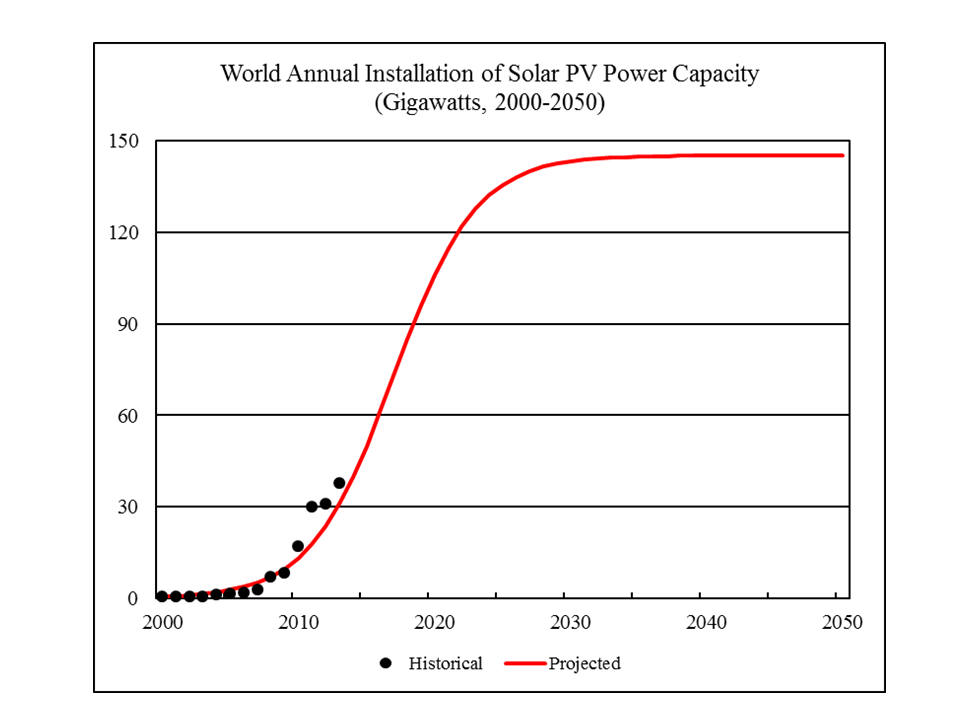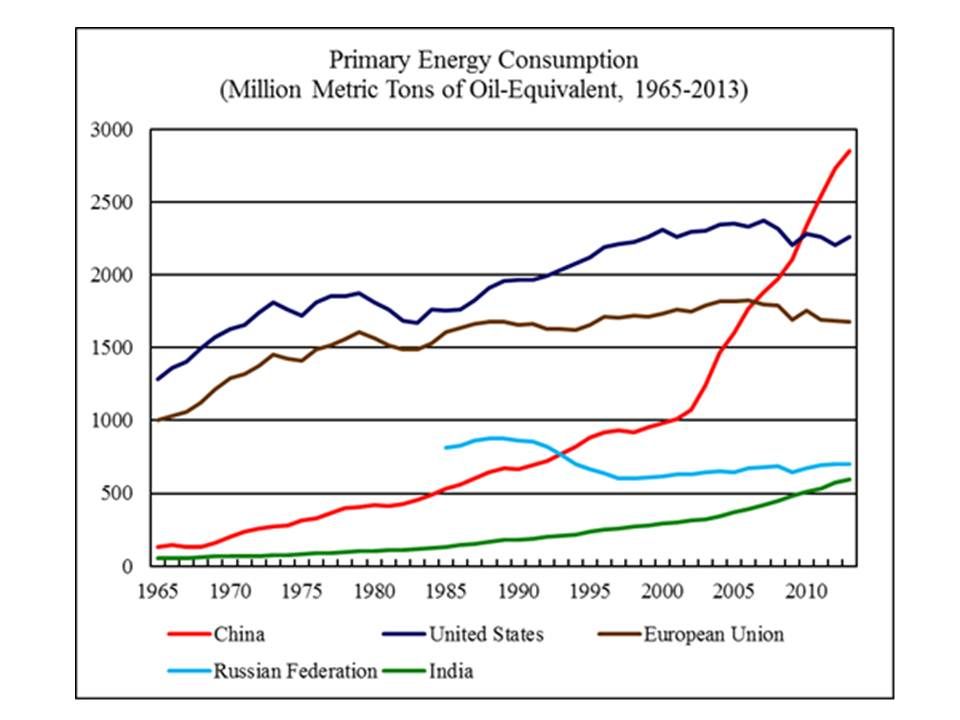This is a guest post by Political Economist
Solar Correction
As I reviewed my spreadsheet, I identified a copy and paste error resulting in a mis-calculation of the solar projection. This affects the projection of annual installation of Solar PV capacity (see Part 2).
The correct projections of annual installation of Solar PV capacity are shown below:

Under the current projection, solar PV annual installation is projected to rise from 38 gigawatts in 2013 to 106 gigawatts by 2020. Beyond 2020, the growth will slow down. After 2030, it will plateau and approach 145 gigawatts (not 108 gigawatts as previously stated).
Again, please note this does not imply that solar electricity generation will peak. Instead, it assumes that the GROWTH of solar electricity generation will peak and plateau. In other words, it assumes that at some point in the future, solar electricity generation growth will become linear rather than exponential. (I had an interesting discussion with Dennis on this after the post of Part 2)
I made corrections of the projected primary energy consumption and world GDP in accordance with the solar PV correction. These are shown below.
Total Primary Energy Consumption
According to BP Statistical Review of World Energy 2014, world primary energy consumption reached 12,730 million metric tons of oil-equivalent, 2.3 percent higher than world primary energy consumption in 2012. Figure 24 shows the primary energy consumption by the world’s five largest energy consumers from 1965 to 2013.

Read More




